How to close the pipes in the toilet
The question of aesthetics in interior design plays an important role. This applies to both the living room or hall, and the bathroom and toilet. The modern construction market offers a variety of materials that make it possible to translate the most original ideas into reality, however, the theoretical side of the issue remains the main thing. For example, before closing the pipes in the toilet, it is necessary to fully understand how to do this. This will be discussed further.
Why do you need it
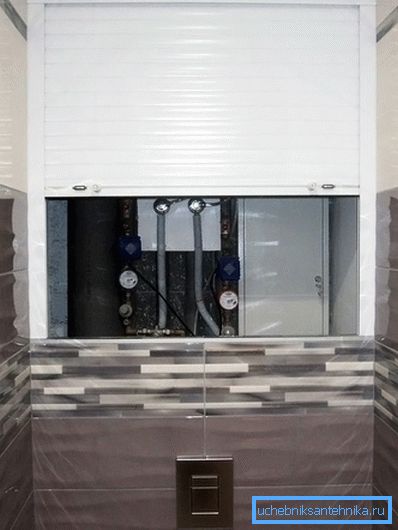
To begin with, it is worth saying a few words about why it is generally worth closing the pipes:
- We'll have to show remarkable design abilities in order to organically integrate open-running pipes into the general concept of the interior of the room.
- Pipes should be hidden for security reasons. The heat carrier at some moments can heat the pipe itself to a fairly decent temperature. For an adult there is practically no problem, but children, with their inherent curiosity, can touch hot pipes and get burned.
- Free access to taps and meters also does not have a positive effect on the overall security of the water supply system.
So, the question of the need for work is obvious, but now it is necessary to determine the option of their implementation. Here it is worth saying that there are several ways to accomplish the task, and for a better understanding they should be considered separately.
Mounting a decorative wall
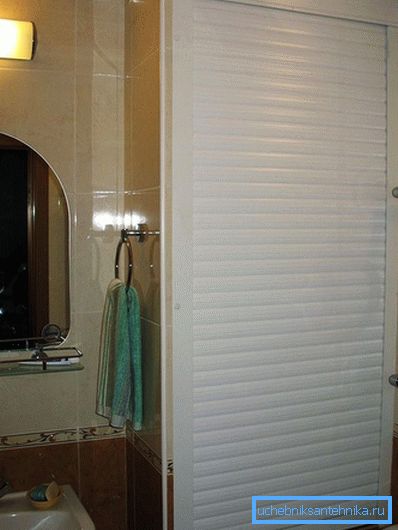
One way to close the pipes in the toilet is to mount a decorative wall. The choice in the direction of this option should be done in the case of an appropriate arrangement of pipes indoors.
If the installation is carried out in such a way that all the main communications nodes are located along one of the walls, then it is most convenient to close them in this way.
Installation of such a decorative shield is relatively simple and is carried out in several stages:
- First you need to mark the surface intended for installation. The distance between the vertical and horizontal lines should be equal and be about a meter.
- Along the marked lines, it is necessary to drill rows of holes into which the plastic dowels are hammered.
- Then U-shaped fasteners are mounted on these holes.
- The fasteners are installed metal profile rails, the result is the crate required for the installation of finishing material.
- The resulting frame is sheathed with plastic panels, moisture-resistant plasterboard or any other material.
When installing such a decorative wall, it is worth paying attention to the fact that in order to maintain, repair and monitor the locations of cranes, meters and other key elements of the system, it is necessary to provide inspection openings that can be closed with special doors.
Mounting box
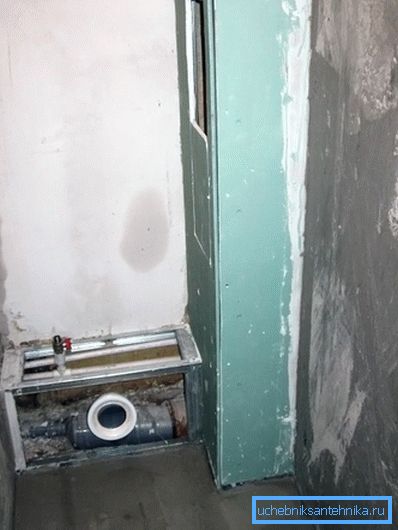
If the pipes are arranged unevenly, for example, along the walls, but in their lower parts, then the installation of a whole wall is unlikely to be appropriate. In this case, it will be more rational to mount a special decorative box, which will hide the elements of communications. The main points of its installation are not very different from the above-mentioned decorative wall, with the only difference that for installation of the box you will need a crate that will close the pipes in several planes.
Sheathing box can be any finishing material that is resistant to moisture.
Roller shutter installation
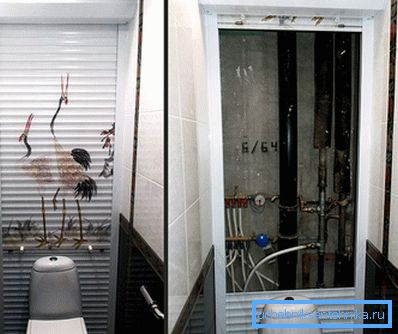
Another option for decorating the toilet room, in which the pipes are hidden from the general view is the installation of roller shutters. This type of device, which is, in fact, one of the types of blinds, is characterized by ease of installation and efficiency.
Roller shutters are installed between two walls with the help of special fasteners and open down. As a result, all pipes, faucets and meters become hidden from view and unwanted interference, and the room takes on a more aesthetic look.
Cabinet installation
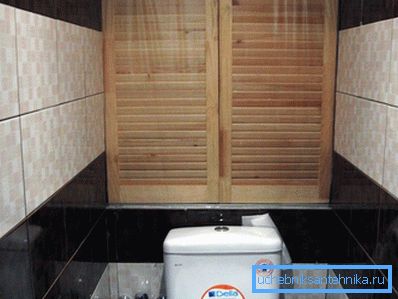
In addition to other options with which you can hide the pipes in the toilet, it should be noted and installation of a special cabinet. In fact, we are talking about installing the same decorative wall, but the difference will be that, in addition to the external decoration, the cabinet will also have functionality. If the dimensions of the room permit, then during the installation of the batten one can make a distance from the wall a little more than is needed for the decorative wall, and in the space obtained herewith, mount a row of shelves fitted with doors.
When installing lockers, it will be possible not only to hide the pipes, but also to organize additional space for storing the necessary items.
Shaving
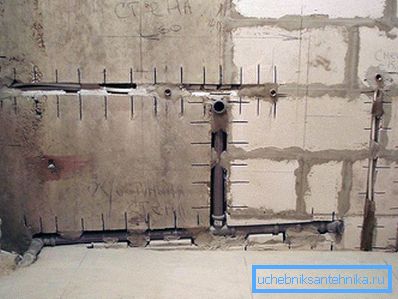
Separately, it is worth considering such an option as shtroblenie. Such an event can be carried out only at the stage of the initial installation of pipes, since it involves their installation in special niches hollowed into the walls. The work consists in the fact that before installing pipes in the walls, long grooves are knocked out, the depth corresponding to the diameter of the pipes. Communication lines are installed inside these niches, and then plastered. This option allows you to save space, but is feasible only with the initial installation or overhaul of the toilet room.
As can be seen from the above, there are many options for solving the issue of decorative decoration of the toilet room, in which pipes are hidden. Most of them can be done by hand, with the basic skills of such work.
Video
In the provided videos are methods of masking pipes in the toilet: